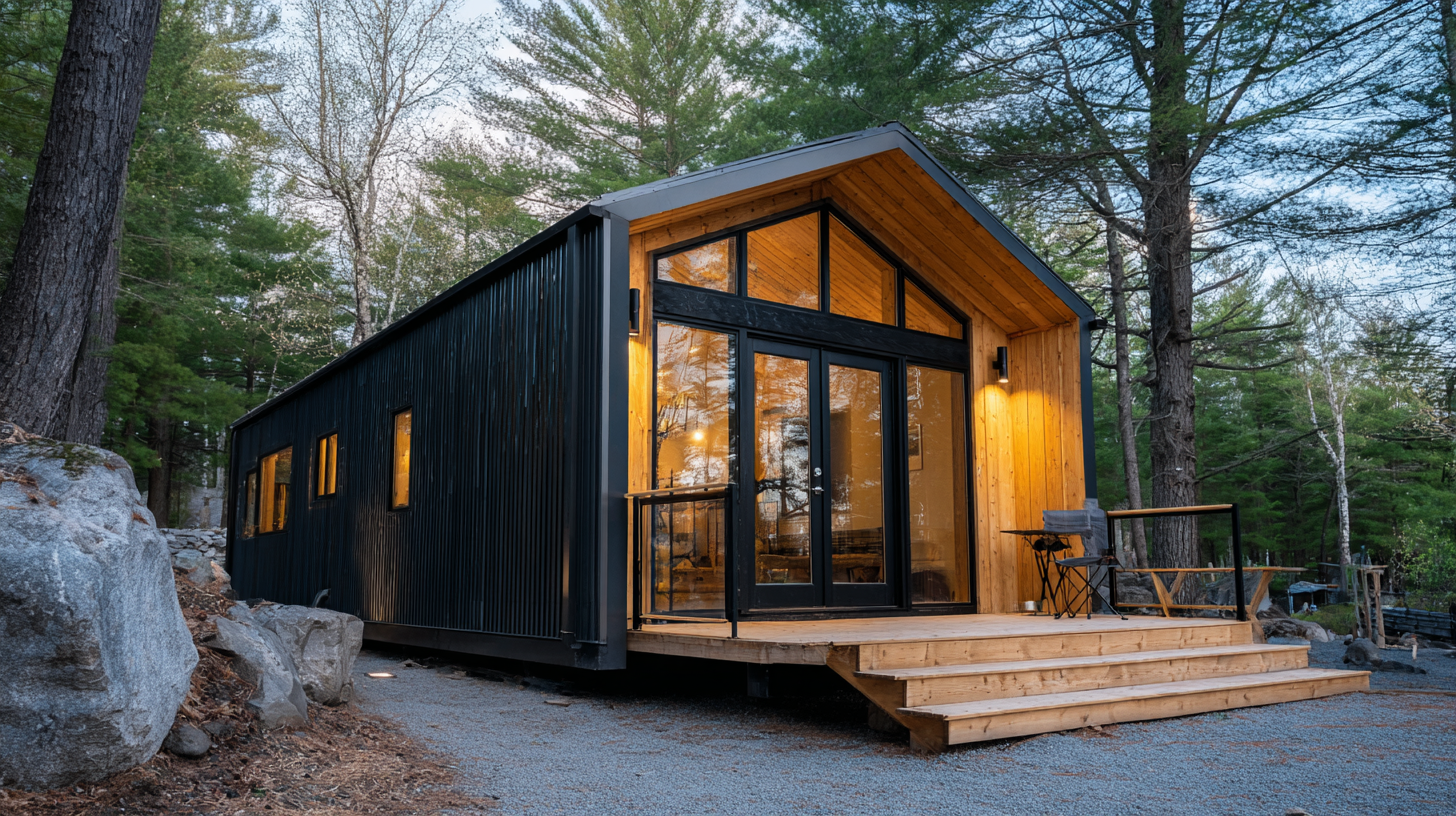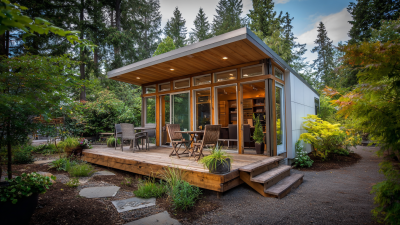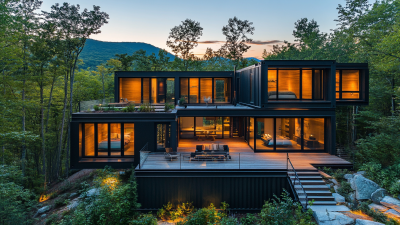The rising interest in sustainable living has led to a growing demand for innovative housing solutions, among which "Small Prefab Cabins" are gaining significant attention. According to a recent report by the McKinsey Global Institute, the construction industry is responsible for nearly 40% of global carbon emissions, prompting the need for eco-friendly alternatives. Small prefab cabins, which are pre-manufactured and designed for minimal environmental impact, offer an attractive solution to this challenge. The National Association of Home Builders highlights that these structures can reduce construction waste by up to 90% compared to traditional building methods, making them a compelling choice for environmentally conscious consumers. Moreover, with the tiny house movement gaining traction, the market for small prefab cabins is projected to grow by more than 10% annually over the next five years, reflecting a shift towards more sustainable living practices that combine efficiency and aesthetics.

Small prefab cabins have surged in popularity as a viable solution for sustainable living, offering numerous advantages that align with eco-friendly practices. These cabins are often constructed using sustainable materials, significantly reducing the carbon footprint associated with traditional building methods. According to a report by the U.S. Green Building Council, buildings account for nearly 40% of carbon emissions in the United States, making the choice of materials and processes in construction crucial for sustainability. Prefab cabins typically employ energy-efficient designs, which can result in lower energy consumption—up to 60% less than conventional homes, as noted in a study published by the National Renewable Energy Laboratory.
Furthermore, the compact nature of small prefab cabins encourages minimalism and resource conservation. By maximizing space and functionality, these homes promote a lifestyle that values quality over quantity, often leading to lower utility bills and reduced maintenance costs. A report from the American Institute of Architects indicates that smaller living spaces are becoming increasingly appealing, with energy-efficient designs contributing not only to reduced consumption but also to an enhanced quality of life. As individuals and families seek smarter ways to live sustainably, small prefab cabins offer a unique balance of efficiency, practicality, and environmental responsibility.

Small prefab cabins are increasingly recognized for their role in sustainable living, particularly when designed with energy efficiency in mind. These compact homes can integrate advanced technologies that not only reduce energy consumption but also minimize environmental impact. By utilizing materials that promote insulation and energy conservation, small prefab cabins can maintain comfortable temperatures with less reliance on traditional heating and cooling systems. This focus on energy efficiency allows residents to significantly lower their utility bills while contributing to a greener planet.
Moreover, the modular nature of prefab cabins offers exceptional adaptability. They can be deployed rapidly in various environments, making them an ideal solution for diverse living situations. These structures often come equipped with standardized units that integrate critical infrastructure such as computing, storage, and power systems. This streamlining facilitates easier assembly and disassembly, allowing for relocation or expansion as needed. Such flexibility not only meets the demands for sustainable living but also supports the growing need for efficient and scalable housing solutions in today’s fast-paced world.

Prefab cabins have surged in popularity as a practical solution for those seeking sustainable living options, particularly due to their cost-effectiveness and affordability. With the rising costs of traditional housing, prefab cabins offer an economically viable alternative. These structures are pre-manufactured and assembled on-site, which significantly reduces labor costs and construction time. Potential homeowners can often find prefab models tailored to their budget, making them an attractive choice for various demographics, including first-time buyers and those looking to downsize.
Moreover, the expenses associated with prefab cabins extend beyond initial construction. Many models are designed with energy efficiency in mind, incorporating sustainable materials and systems that lower utility costs in the long run. Features such as solar panels, insulation, and energy-efficient appliances can help occupants save money while reducing their carbon footprint. Thus, investing in a prefab cabin not only represents a financially prudent decision but also aligns with environmentally conscious living practices, making these dwellings an appealing option for sustainable lifestyles.
The growing popularity of small prefab cabins aligns seamlessly with the principles of sustainable living, particularly in terms of their environmental impact and resource efficiency. Prefabricated construction significantly reduces waste during the building process, as components are manufactured in controlled environments. This approach minimizes excess materials that often end up in landfills, a common drawback of traditional construction methods. Additionally, the precision involved in prefabrication leads to more efficient use of raw materials, thereby decreasing the overall resource consumption.
Moreover, small prefab cabins are typically designed with energy efficiency in mind. Many of these structures incorporate sustainable materials and advanced insulation techniques, reducing energy needs for heating and cooling. By enhancing energy performance, prefab cabins not only lower utility costs for occupants but also lessen their carbon footprint. The compact nature of these cabins also promotes minimalism and encourages occupants to adopt a lifestyle that values quality over quantity, fostering a deeper connection with nature and sustainable living practices. This combination of efficient resource use and reduced environmental impact makes small prefab cabins an attractive option for those seeking a more sustainable way of life.
Small prefab cabins have emerged as a popular choice for individuals seeking a sustainable lifestyle, largely due to their customizable features. According to a study by the American Institute of Architecture (AIA), approximately 70% of homeowners express a desire for eco-friendly homes that reflect their personal style. This trend is driving the design of prefab cabins that prioritize both sustainability and individuality. Homeowners can choose from various materials, layouts, and energy-efficient technologies, ensuring that their cabin meets specific environmental criteria while embodying their unique aesthetic preferences.
Moreover, customization options extend beyond just visual appeal; they also encompass functional aspects such as insulation, energy sources, and water conservation systems. The U.S. Green Building Council reports that well-designed prefab structures can reduce energy consumption by up to 50% compared to traditional homes. By integrating solar panels, rainwater harvesting systems, and sustainable materials into their designs, owners of small prefab cabins can significantly lower their carbon footprint while enjoying a personalized living space that aligns with their values of sustainability and efficiency.






